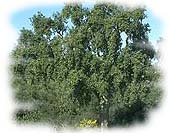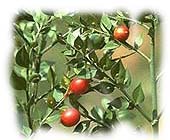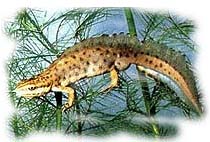| | | Roman Coastal Reserve | | | Zones | | | Procoio - Acque Rosse | | | How to get there |

The NATURAL CHARACTERISTICS of the two zones are similar to those of Castel Fusano.
  Butcher's
broom
Butcher's
broom
|
The Acque Rosse wood is mainly composed of Italian
stone pine (introduced artificially in the past) and therefore almost
devoid of ground cover. Other arboreal essences are characterized
by the Eucalyptus and the Birch and shrubs typical of the
mediterranean maquis, such as the cistus and the lentisk;
the rest of the wood is made up of brambles and reed thickets.
At the outskirts of the Pinewood, a vast, sandy area can be found. This area is uncultivated and sometimes used for grazing. The PROCOIO Estate consists of various environments, like the Holm oak and Cork oak thickets - pleasant and distinguishing characteristics of the Roman Coast. This tree prefers rainy areas and, in the region of Lazio, it can be found, in particular, in very sandy areas such as Castel Porziano, Pomezia, Pratica di Mare and Circeo. This tree is practically inexistent near the mouth of the Tiber due to the limestone in the earth, with the exception of the Procoio Estate. Here, in fact, the clayey layers (that are practically waterproof) have, with the passing of time, risen to the surface and the resulting appearance of the aquifer has allowed for the creation of a natural habitat that is favourable to the cork oak. |

 Smooth newt
Smooth newt
|
..And that is not all...: nocturnal birdwatchers
can observe the silent flight of the beautiful Barn owl.
As far as the Acque Rosse Pinewood is concerned, it is fundamental to note the passage of the Pied flycatcher in springtime and the increasingly rare presence of certain amphibians, such as the Smooth newt (Triturus vulgaris meridionalis), the Crested Tryton and the Toad (Bufo viridis). |